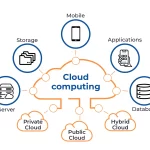Building a Robust Network and Infrastructure: Key Considerations and Best Practices
In today’s digital age, a reliable and efficient network and infrastructure form the backbone of any organization’s IT ecosystem. Whether it’s ensuring seamless connectivity, data security, or optimizing system performance, network, and infrastructure management play a critical role in supporting business operations. In this blog, we will explore key considerations and best practices for building and maintaining a robust network and infrastructure.
Scalability and Flexibility: When designing networks and infrastructure, scalability and flexibility are paramount. Anticipate future growth and ensure that the network can accommodate increasing demands in terms of data traffic, users, and devices. Consider implementing technologies such as virtualization and cloud computing to enhance scalability and enable easy resource allocation. A scalable and flexible infrastructure minimizes disruptions and enables seamless expansion as the organization evolves.
Redundancy and High Availability: To ensure uninterrupted operations, redundancy and high availability are crucial. Implement redundancy measures such as redundant power supplies, multiple internet service providers (ISPs), and backup systems to minimize the risk of single points of failure. Employ fault-tolerant architectures, load-balancing techniques, and failover mechanisms to distribute workload and ensure continuous service availability. Redundancy and high availability help mitigate the impact of potential failures and ensure business continuity.
Network Security: Network security is a top priority in today’s threat landscape. Implement robust security measures, including firewalls, intrusion detection systems (IDS), and secure access controls, to protect against unauthorized access and data breaches. Regularly update and patch software, conduct vulnerability assessments, and establish strong encryption protocols. Additionally, educate employees about cybersecurity best practices to foster a security-conscious culture within the organization.
Network Monitoring and Performance Optimization: Monitoring and optimizing network performance are essential for maintaining an efficient and reliable infrastructure. Implement network monitoring tools to track key performance indicators (KPIs), identify bottlenecks, and proactively address potential issues. Regularly assess network performance, analyze traffic patterns, and optimize network configurations to ensure optimal data flow and user experience. Continuously monitor bandwidth utilization, latency, and packet loss to identify areas for improvement and take corrective actions.
Network Segmentation and Access Control: Network segmentation involves dividing the network into smaller, isolated segments to enhance security and control access. Implement logical segmentation using virtual local area networks (VLANs) or software-defined networking (SDN) to separate sensitive data and restrict access based on user roles and permissions. Implement robust authentication mechanisms, such as multi-factor authentication (MFA), to ensure only authorized individuals can access critical systems and resources.
Regular Backups and Disaster Recovery Planning: Data loss can have severe consequences for an organization. Regularly back up critical data and establish a comprehensive disaster recovery plan. Backups should be stored securely and tested periodically to ensure data integrity and recovery readiness. Define recovery time objectives (RTOs) and recovery point objectives (RPOs) to determine acceptable downtime and data loss thresholds. Conduct periodic disaster recovery drills to validate the effectiveness of the plan.
Continuous Training and Skill Development: Network and infrastructure technologies continuously evolve, requiring IT professionals to stay updated with the latest knowledge and skills. Invest in continuous training and skill development programs for the IT team to ensure they possess the expertise necessary to manage and optimize the network and infrastructure effectively. Encourage certifications, participation in industry conferences, and knowledge sharing among team members to foster a culture of continuous learning.
Regular Audits and Compliance: Regular audits and compliance assessments are essential to maintain a secure and compliant network and infrastructure. Conduct internal and external audits to evaluate adherence to industry standards, regulatory requirements, and organizational policies. Perform vulnerability assessments, penetration testing, and security audits to identify potential weaknesses and implement appropriate remediation measures. Complying with industry regulations and standards ensures data protection, mitigates legal risks, and builds trust with customers.


































